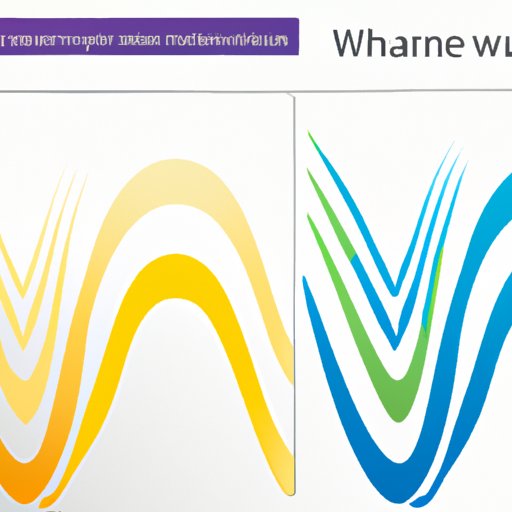
Introduction
Wavelength and frequency are fundamental concepts in physics. Wavelength is the distance between successive crests or troughs of a wave, while frequency is the number of oscillations of the wave per second. Both of these concepts have practical applications in various fields, including wireless communication, medical imaging, and spectroscopic analysis. Understanding how to find the wavelength of a frequency is crucial for these applications.
Step-by-step guide
Wavelength is related to frequency by the formula:
wavelength = speed of light / frequency
The speed of light is a constant, which is approximately 3 x 10^8 meters per second. Therefore, we can calculate the wavelength of a frequency by dividing the speed of light by the frequency of the wave.
For example, if the frequency of a wave is 500 MHz (megahertz), we can calculate its wavelength as:
wavelength = 3 x 10^8 / 500 x 10^6 = 0.6 meters
To calculate the wavelength of a frequency, follow these steps:
- Determine the frequency of the wave in hertz (Hz) or megahertz (MHz).
- Find the speed of light constant, which is approximately 3 x 10^8 m/s.
- Plug in the frequency value into the wavelength formula, dividing the speed of light by the frequency.
- Solve for the wavelength, which is measured in meters.
Real-world application
The ability to find the wavelength of a frequency has numerous practical applications. For example, wireless communication devices, such as radios and cell phones, use electromagnetic waves that are transmitted at specific frequencies. By understanding the wavelength of the frequency, engineers can design and optimize these devices for efficient communication.
Medical imaging technologies, such as ultrasound and MRI machines, use waves with specific frequencies to generate images of the human body. Understanding the relationship between wavelength and frequency is crucial for these machines to function properly and produce accurate images.
Spectroscopic analysis is another field that relies on understanding wavelength and frequency. Spectroscopy is used to measure the chemical composition of a substance by analyzing its interaction with electromagnetic waves of different wavelengths. By understanding the relationship between wavelength and frequency, spectroscopists can accurately identify the chemical components of a substance and their concentrations.
Comparison with other concepts
Wavelength is related to other physics concepts, such as amplitude, velocity, and time period. Amplitude is the height of the wave, while velocity is the speed at which the wave travels. Time period is the time it takes for one complete oscillation of the wave.
Wavelength is inversely proportional to frequency, which means that as frequency increases, wavelength decreases, and vice versa. Wavelength and amplitude are also related, as waves with larger amplitudes have higher peaks and deeper troughs, which correspond to longer wavelengths.
Velocity is related to wavelength and frequency by the formula:
velocity = wavelength x frequency
This formula shows that the velocity of the wave is directly proportional to both its wavelength and frequency. Time period is related to frequency by the formula:
time period = 1 / frequency
This formula shows that as the frequency of the wave increases, the time period decreases, and vice versa.
Historical evolution
The concept of wavelength was first proposed by the British physicist Thomas Young in the early 19th century. He used a double-slit experiment to demonstrate the wave-like nature of light and proposed that light waves had a specific wavelength. This concept was later expanded upon by James Clerk Maxwell, who developed the electromagnetic theory of light and proposed that all electromagnetic waves had a specific wavelength and frequency.
Today, the knowledge of wavelength and frequency has impacted various fields, including physics, astronomy, and telecommunications. These concepts have allowed scientists and engineers to develop new technologies and improve existing ones, leading to significant advancements in our understanding of the world.
Visual representation
Diagrams, graphs, and images can help simplify complex concepts like wavelength and frequency. For example, a graph showing the relationship between wavelength and frequency can help readers understand the inverse relationship between these two concepts. A diagram showing the electromagnetic spectrum can also help readers understand the different types of waves and their corresponding wavelengths and frequencies.
Conclusion
Understanding how to find the wavelength of a frequency is crucial for numerous practical applications, including wireless communication, medical imaging, and spectroscopic analysis. By following the step-by-step guide provided in this article, readers can calculate the wavelength of a frequency using simple math formulas. Furthermore, by understanding the relationship between wavelength, frequency, and other physics concepts, readers can develop a deeper understanding of the world around us and the technologies we use every day.





